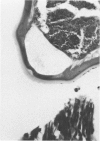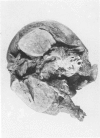Abstract
This article gives an account of the filarial parasites found in man and their potential transmissibility to and from other vertebrate animals under natural and experimental conditions.
Those species that are regarded as being primarily parasites of other vertebrates, but which also infect man, are then dealt with in greater detail. These include the subperiodic strain of Brugia malayi and perhaps also B. pahangi, both of which are found in wild and domestic carnivores and monkeys, and Dirofilaria species of dogs and racoons.
The Brugia parasites develop to maturity with the production of microfilaraemia and clinical manifestations in man similar to those caused by periodic B. malayi in man. Human dirofilariasis, on the other hand, represents a transmission cul-de-sac for the parasite. Clinical manifestations are mild or absent and generally the worms do not mature and, even if they do, they rarely give rise to microfilaraemia. D. immitis causes pulmonary dirofilariasis, and D. repens and D. tenuis give rise to subcutaneous nodules in man. The diagnosis of dirofilariasis depends on an awareness of the infection in the animal reservoirs and of the possibility of man being exposed to bites of infected vectors.
Full text
PDF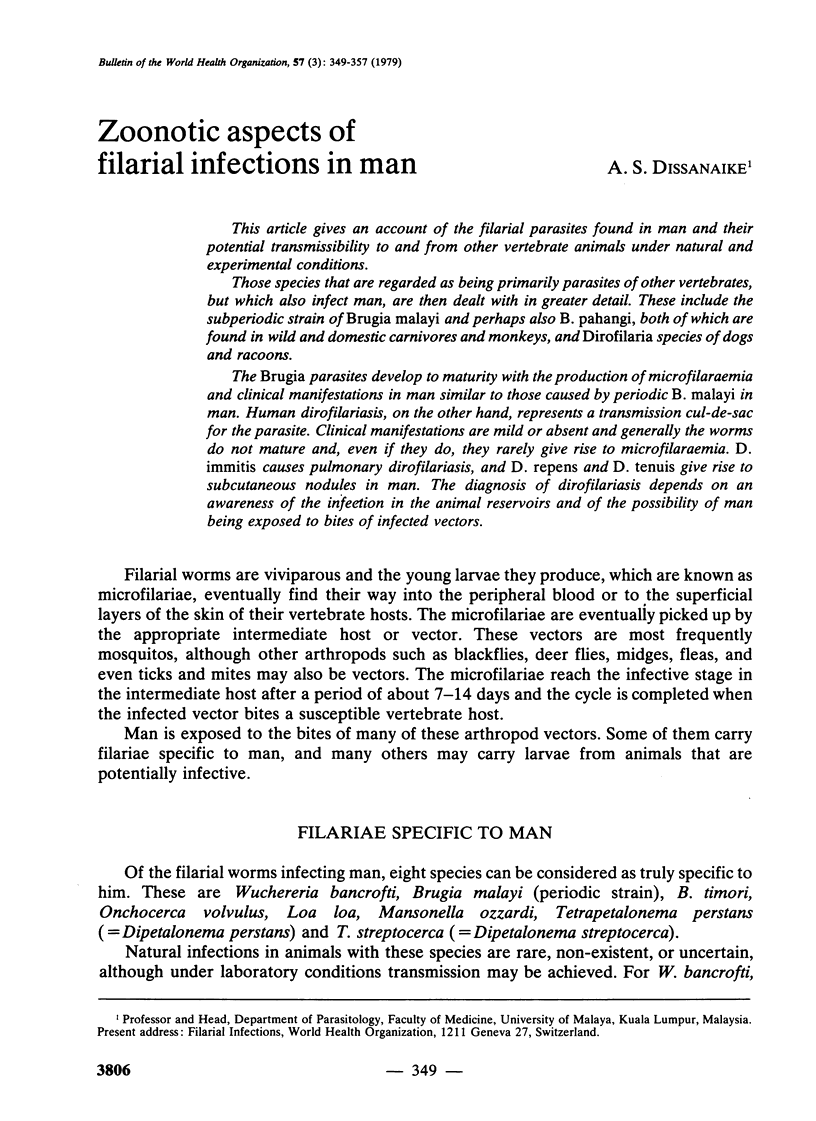
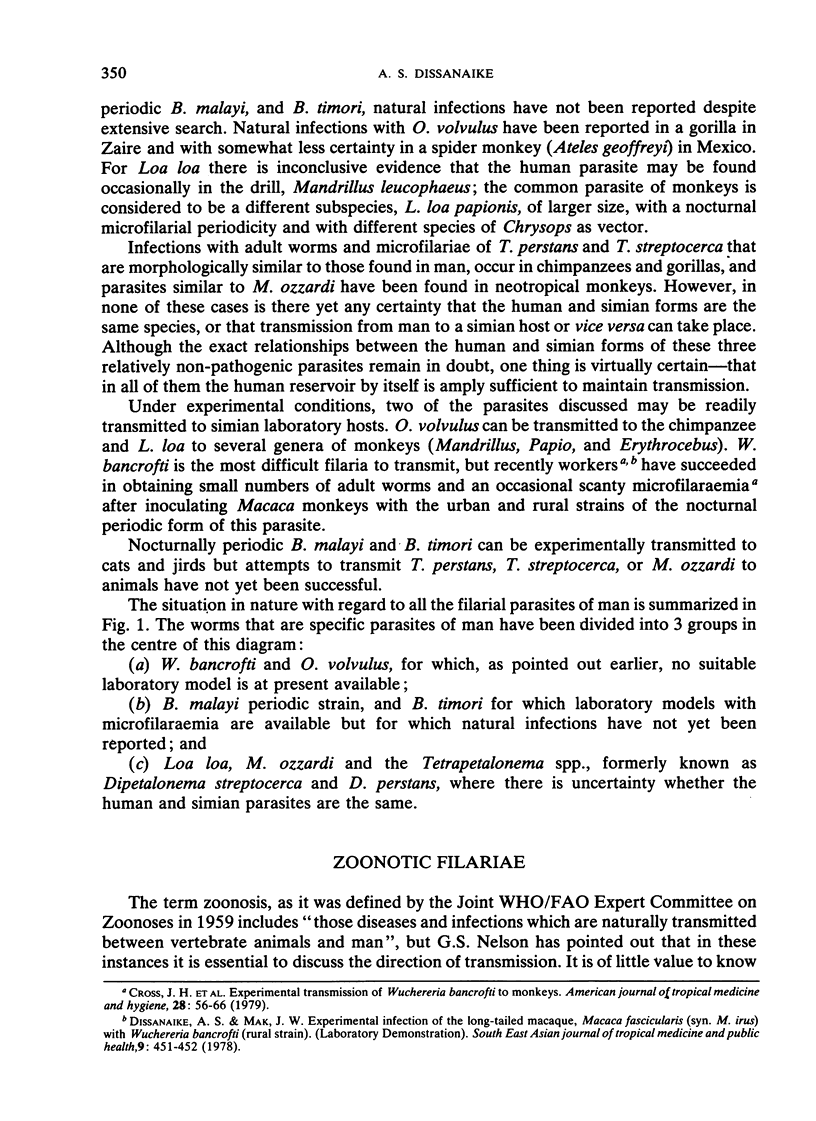
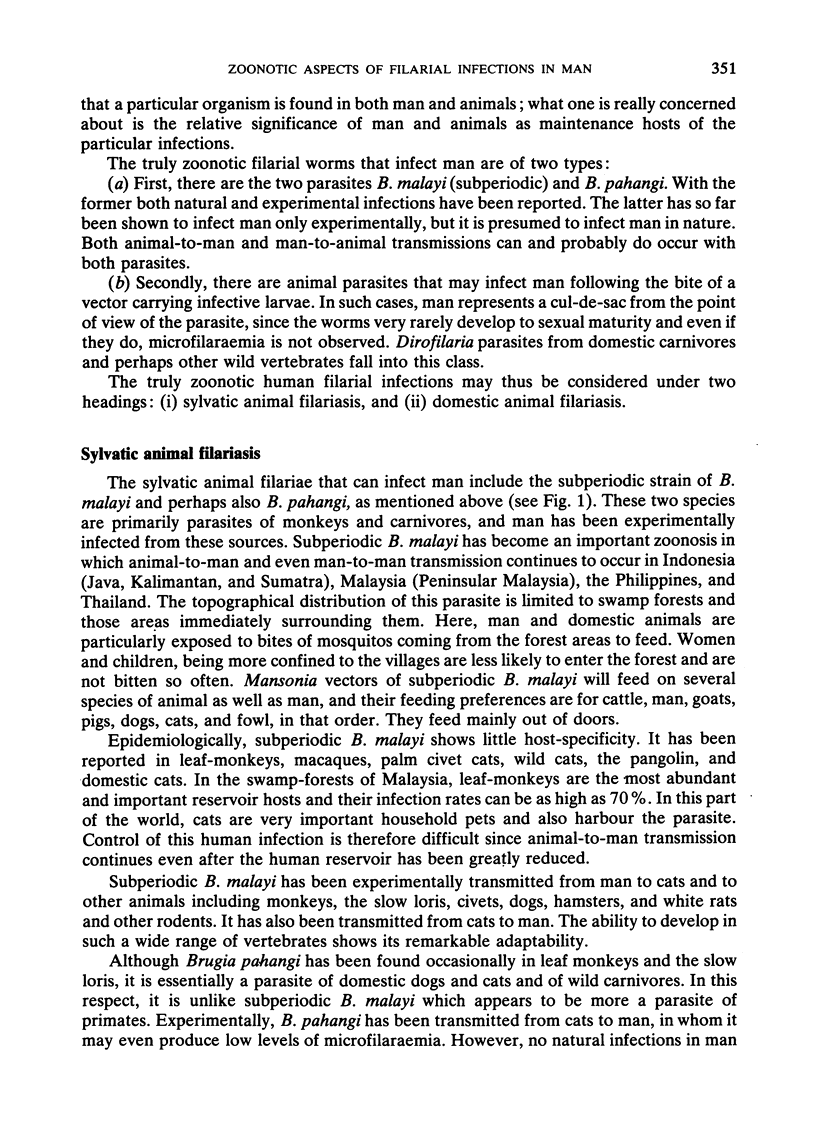
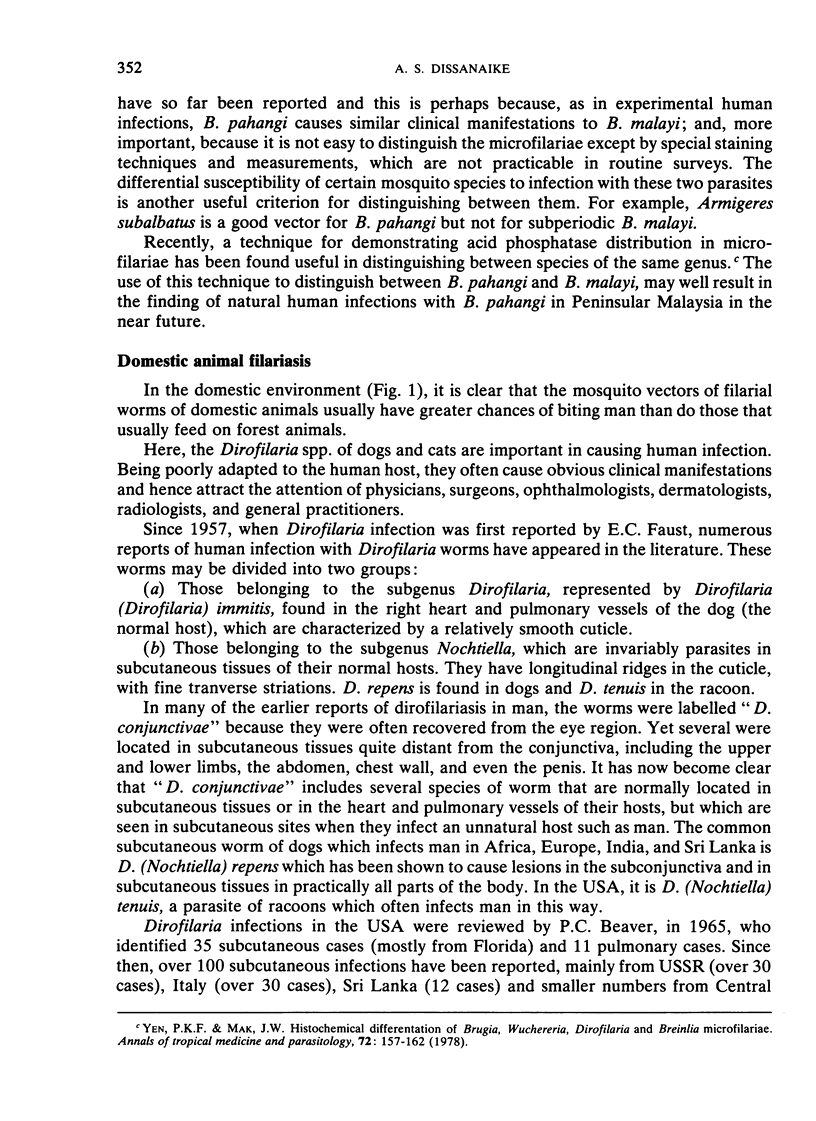
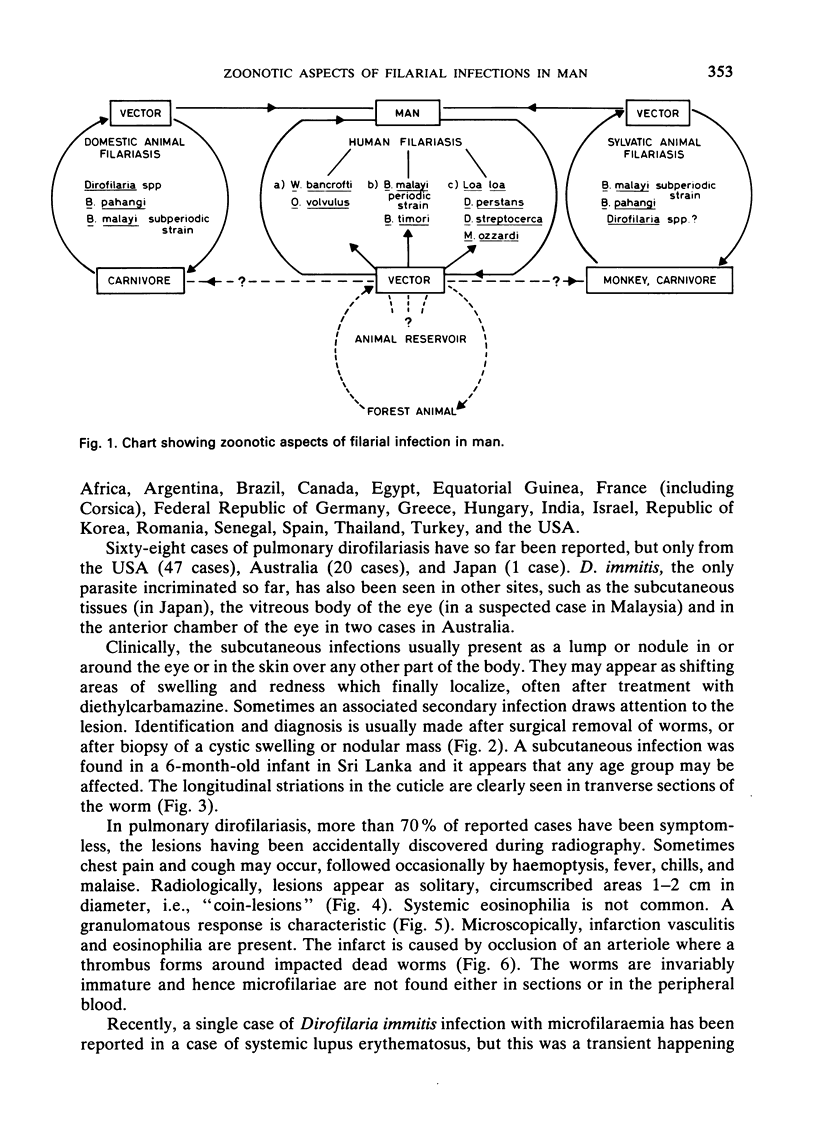
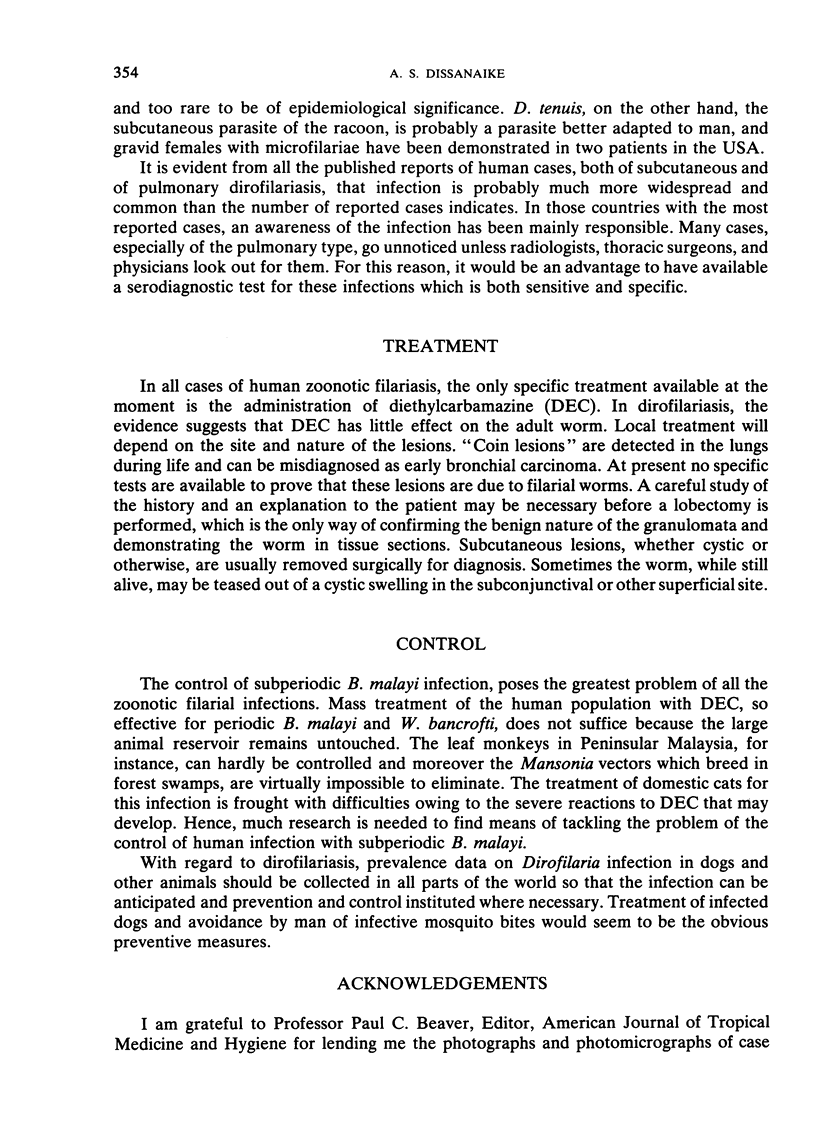
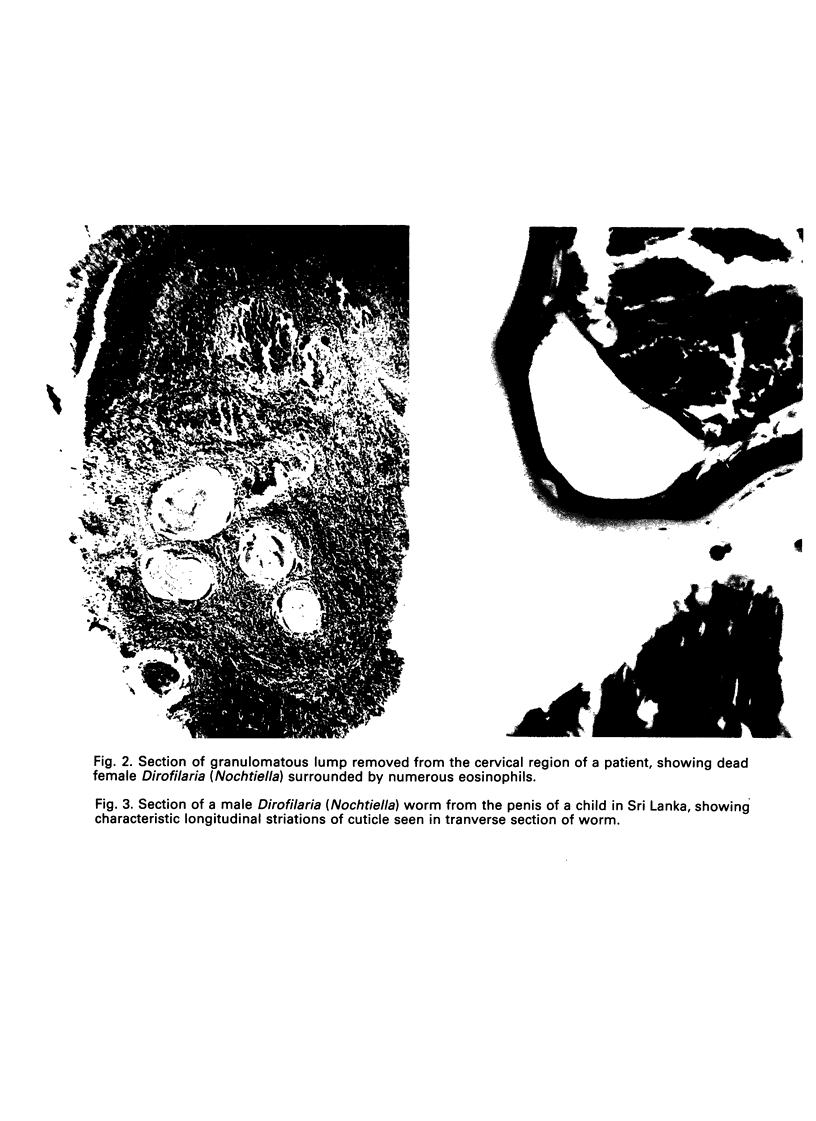

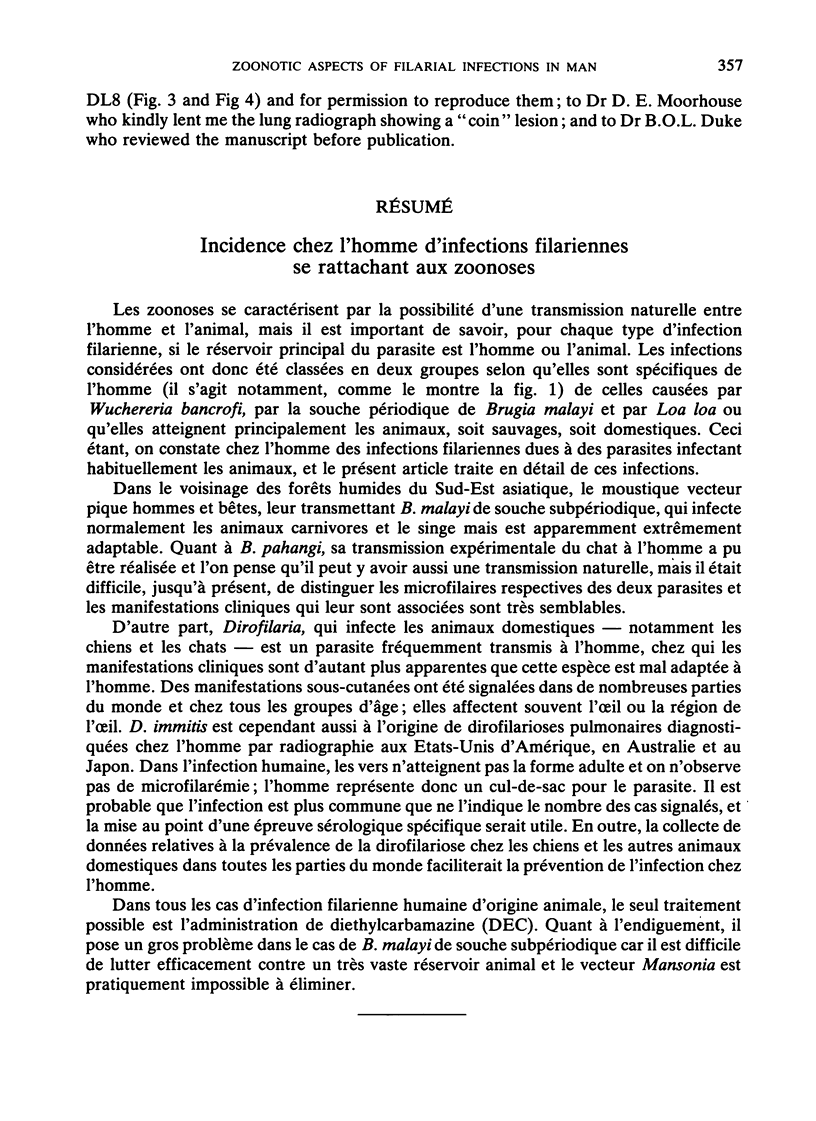
Images in this article
Selected References
These references are in PubMed. This may not be the complete list of references from this article.
- Dissanaike A. S., Mak J. W. Experimental infection of the long-tailed macaque, Macaca fasicularis with Wuchereria bancrofti (rural strain). Southeast Asian J Trop Med Public Health. 1978 Sep;9(3):451–452. [PubMed] [Google Scholar]
- Yen P. K., Mak J. W. Histochemical differentiation of Brugia, Wuchereria, Dirofilaria and Breinlia microfilariae. Ann Trop Med Parasitol. 1978 Apr;72(2):157–162. [PubMed] [Google Scholar]




